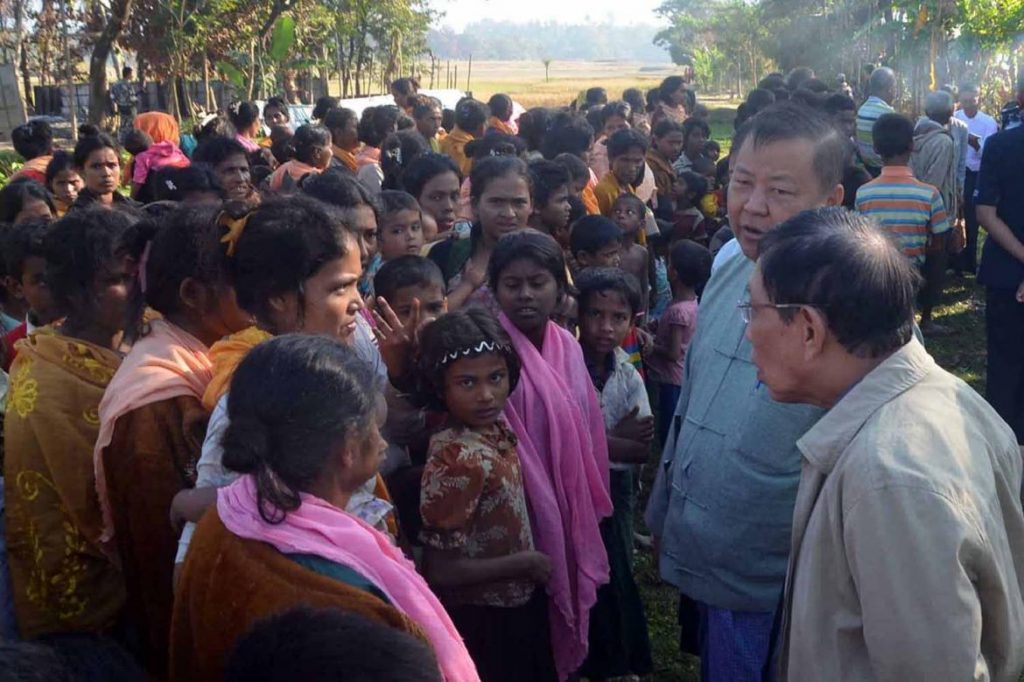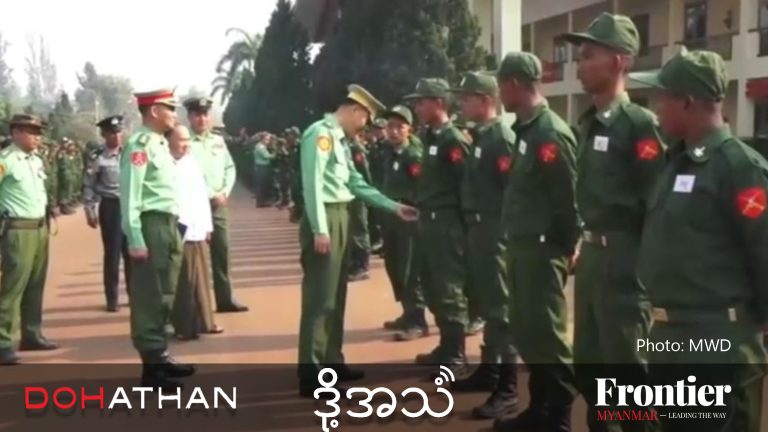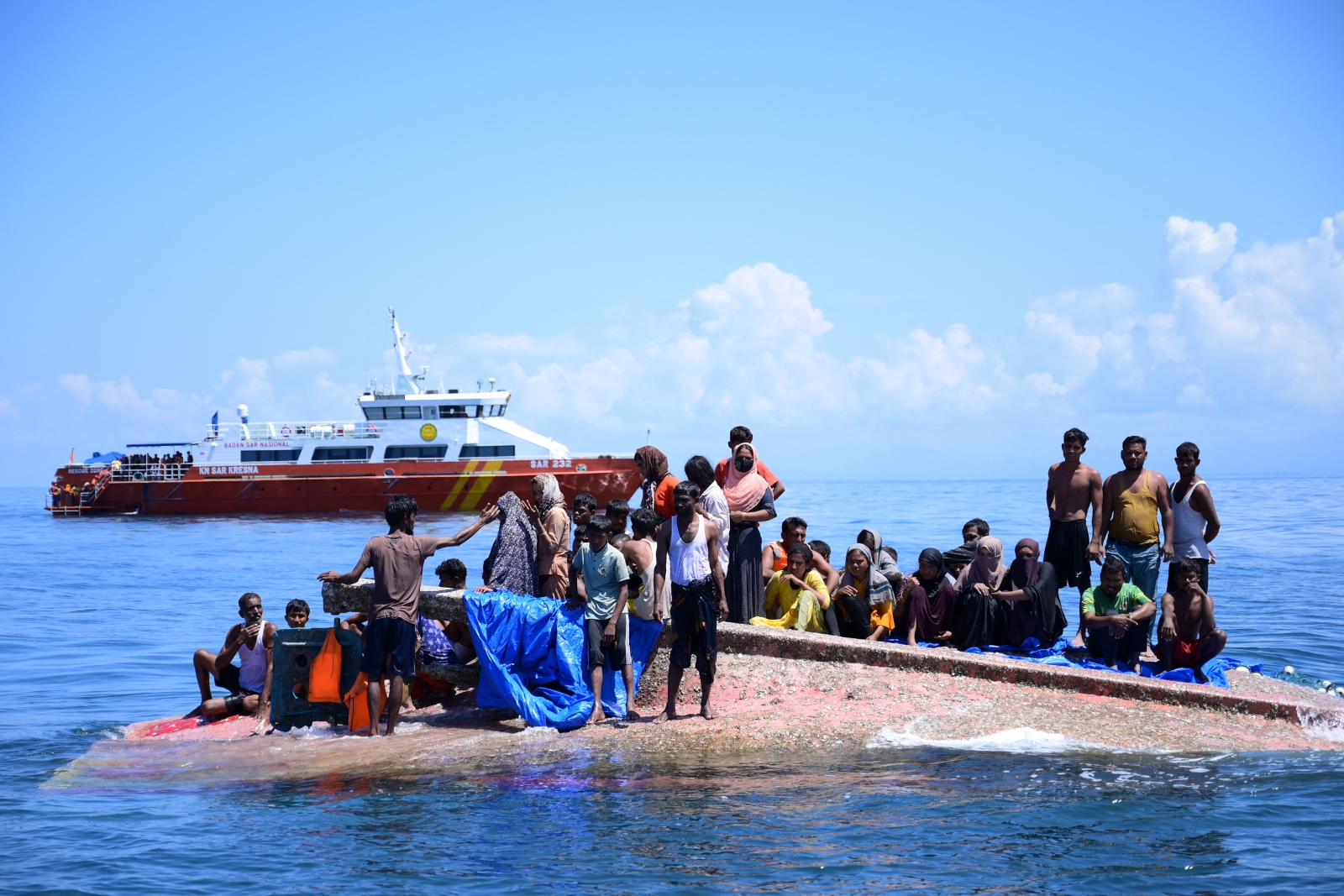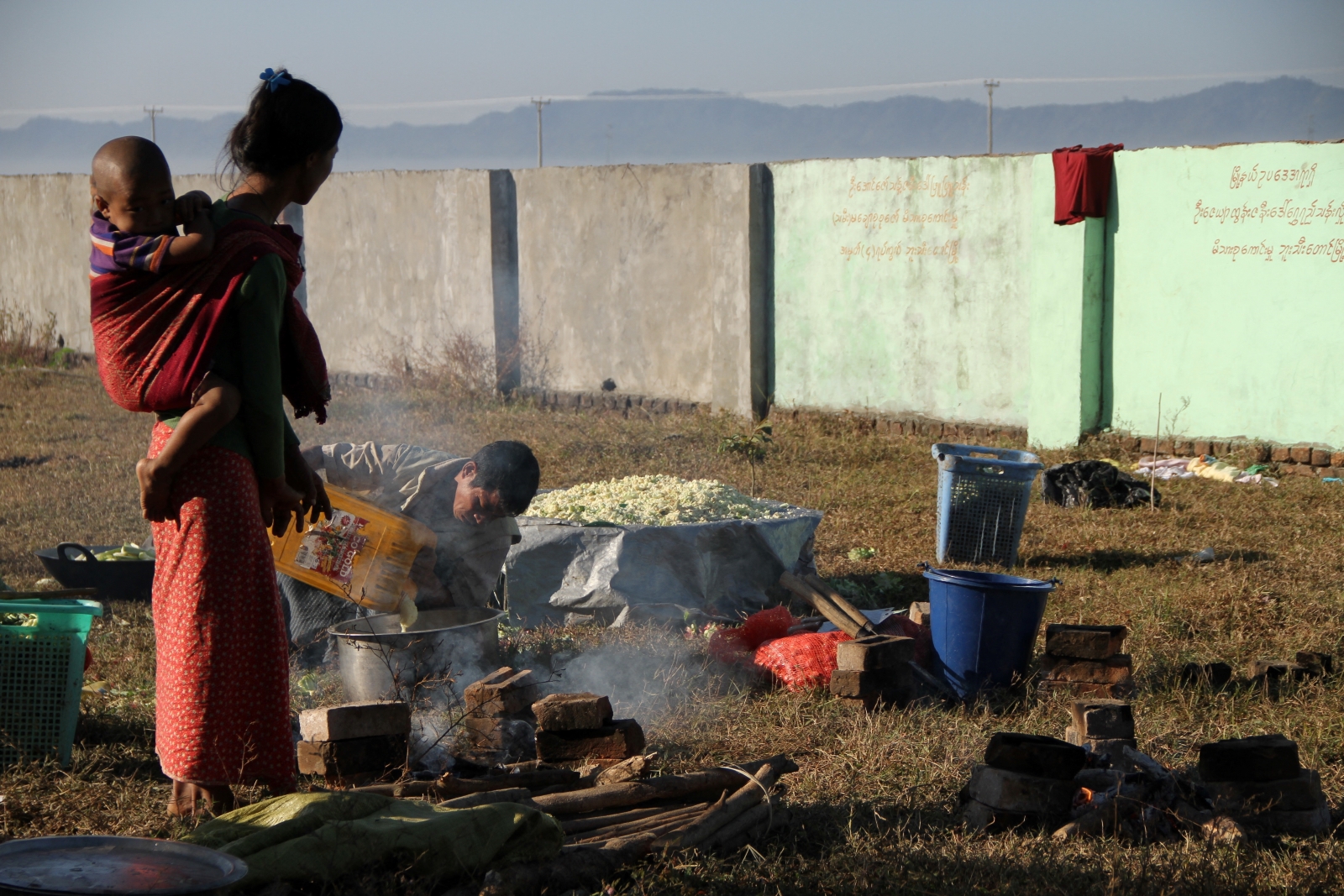Led by Daw Aung San Suu Kyi, the government is trying to solve the complex issues in the restive region, but is hindered by international criticism and an unwavering attitude by the old guard toward the state’s Muslim community.
By SITHU AUNG MYINT | FRONTIER
ON DECEMBER 23, the decapitated body of U Shu Na Myar, a Muslim village elder and volunteer librarian from Ngakhuya village in Maungdaw Township, was found by police. It has not yet been confirmed who was responsible for his death, but it is suspected to be linked to the fact that on December 21 he spoke with reporters who were visiting the conflict-hit region as part of a government-sponsored press trip.
Security forces have conducted a heavy crackdown since militants attacked three Border Guard Police outposts in northern Rakhine State on October 9, killing nine officers and seizing ammunition and weapons. Human rights groups and international media outlets have accused the military of using disproportionate force – including rape, arbitrary arrest and extra-judicial killing – against the Muslim population during “clearance operations”. The military and government have denied the accusations.
In December, the government allowed journalists from 13 domestic and international news outlets to visit parts of the affected area and speak with witnesses. Two days after meeting the reporters, Shu Na Myar’s body was found. He had been reported missing by his family a day earlier.
In an already tense and volatile part of the country, a new challenge has emerged in Rakhine State. Will the government be able to resolve these problems? That’s the question I’d like to address this week.
Support more independent journalism like this. Sign up to be a Frontier member.
Rakhine State is the second poorest state or region in Myanmar, behind only Chin State. Due to a lack of job opportunities, over the years many people have left to look for jobs elsewhere, both domestically – particularly in Yangon and Kachin State – and abroad, such as Thailand and Malaysia. Restrictions on much of the Muslim population in the state though have meant that many of them are unable to leave.
Rakhine State is rich in natural resources including natural gas, marine life and fertile land for agriculture, but the local people have barely seen the benefits of the resources; instead, many fell into poverty under military rule.
During the term of the U Thein Sein-led government, two more problems emerged in the state. Although there had been some tensions between the communities before, the 2012 violence created huge divisions between the Buddhist and Muslim communities. Some believe that rather than trying to bring the communities together the former government instead made the problem worse so as to divert the Rakhine people’s anger away from the government and toward the local Muslim population.
After the violence, 140,000 people – mainly Muslims – were displaced and more than four years on, many remain in camps. The Myanmar government has come under considerable criticism from abroad for its handling of the situation.
Another problem was added after the Arakan Army gained a foothold in Rakhine State, with the assistance of the Kachin Independence Army. There have been sporadic clashes between the AA and the Tatmadaw in Rakhine State, adding to the challenges faced by those trying to solve the myriad issues there.
The October 9 attacks were carried out barely six months into the new government’s term. As the Muslim insurgents anticipated, when the security forces undertook their “clearance operation” they were accused of burning down villages, killing and torturing Muslim villagers, and raping women. The international media continues to criticise the Myanmar government over these allegations.
This is creating more problems in Rakhine State on top of the existing problems that the government has so far not been able to resolve.
The Rakhine conflict is a consequence of the attitudes and policies of successive military governments and the actions of the Thein Sein government. Now we have the right policy to resolve the issues and the NLD government is trying to implement it.
However, to make Rakhine a peaceful, stable and developing state, the NLD government has many hurdles to overcome – from an emerging insurgency and international criticism to the unchanged hardline attitudes of military and ethnic Rakhine leaders toward the Muslim community in Rakhine State.







